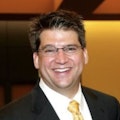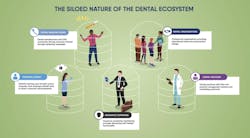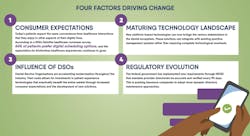Breaking down silos: The changing landscape of dental patient acquisition
Key Takeaways:
-
B-C-B marketing is reshaping dental patient acquisition
-
Real-time online scheduling is crucial for patient conversion
-
Integrated platforms must connect the dental ecosystem
-
Consumer expectations are driving digital change in dentistry
-
Regulatory pressure is fueling directory modernization
Every month, tens of millions of potential patients visit dental websites and provider directories searching for dental care. Each represents a potential opportunity for practices across the country to acquire new patients and grow their patient base, yet despite this, many continue to struggle with new patient acquisition.
This is because patients looking for dental care aren't consistently finding their way into dental chairs. But why? And more importantly, what can forward-thinking dental practices do to end the disconnect?
The digital disconnect in dental care
According to dental practice consultant Geri Gottlieb, founder of GG Practice Coaching & Development, "Over 75% of patients who begin searching for a dental provider never actually schedule an appointment. From my own experiences, when I can't make appointments online or pay online, I often inadvertently abandon the process altogether."
This problem persists across the industry-even for practices that have invested in digital tools and modern practice management systems. When potential patients visit insurance provider directories, manufacturer websites, or professional organization resources, they often reach a dead end: a static list of providers with nothing more than phone numbers.
In today's digital economy, this creates an unacceptable level of friction. Modern consumers expect the same level of convenience and ease from health care as they do in other aspects of their lives, particularly when it comes to booking appointments or reservations. When patients want to schedule an appointment but encounter an office that's closed, staff members busy with in-office patients, or voicemail systems that lead to unreturned calls, they frequently abandon their search entirely, resulting in missed patient acquisition opportunities for the practices.
The siloed nature of the dental ecosystem
The fundamental breakdown lies in the fragmented, siloed nature of the dental ecosystem. The industry has evolved into distinct segments that don't effectively communicate with one another. Patients are seeking care through various channels, from employer benefit sites to direct consumer advertisements.
Although insurance carriers maintain provider directories, they often have limited functionality. Similarly, dental manufacturers and brands drive consumer interests through marketing campaigns. These costly marketing efforts drive patients to their product sites to learn more; however, patients then hit a wall.
On the other side of the equation, dental practices are investing into their own practice management systems and patient communication tools, all while building out scheduling protocols. But even with these tools, there is still a disconnect between the patients looking for providers and successfully scheduling them with the correct provider.
These disconnected stakeholders create a fragmented patient journey rife with dropout points. In other industries, technological solutions have emerged to connect these types of disparate ecosystems-think of how OpenTable revolutionized restaurant reservations or how travel aggregators transformed booking flights and hotels. Dentistry is overdue for a similar transformation. Understanding why this disconnect persists requires examining the dental market's unique characteristics.
From fishing to farming: the shift to B-C-B marketing
Traditional dental practice growth has followed what might be called a "fishing" model: practices cast marketing lines into their communities, hoping to attract new patients through local advertising, referrals, and visibility. The burden of acquisition has historically fallen on individual practices-a model that's becoming increasingly inefficient.
A transformative shift is occurring toward what strategists call business-to-consumer-to-business (B-C-B) marketing within dentistry. In this model, (1) large dental manufacturers and insurance companies market directly to consumers, (2) these campaigns create interest in specific procedures or dental services, and (3) interested consumers then need a seamless pathway to dental practices that can fulfill their needs.
This approach allows practices to benefit from the significant marketing investments made by larger industry players rather than shouldering the entire acquisition burden themselves. The missing piece has been the connective tissue between consumer interest and practice schedules.
Four converging factors driving change
Several key factors are finally making health-care ecosystem solutions viable in dentistry:
Evolving consumer expectations Today's patients expect the same convenience from health-care interactions that they enjoy in other aspects of their digital lives. According to a 2024 Deloitte health-care consumer survey, 64% of patients prefer digital scheduling options, and the expectation for frictionless health-care experiences continues to grow.
Maturing technology landscape New platform-based technologies can now bridge the various stakeholders in the dental ecosystem. These solutions can integrate with existing practice management systems rather than requiring complete technological overhauls.
The influence of dental service organizations (DSOs) DSOs are accelerating modernization throughout the industry. Their scale allows for investments in patient experience technologies that eventually benefit the entire market through increased consumer expectations and the development of new solutions.
Regulatory evolution
The federal government is crafting legislation, such as HR133, that mandates provider directories be accurate and verified every 90 days. This is pushing insurance companies to adopt more dynamic directory maintenance approaches.
The promise of integrated patient engagement
A recent MIT Sloan Management Review article identified three critical success factors for health-care technology platforms:
-
Integrating within established existing ecosystems
-
Creating value through scale with multiple stakeholder participation
-
Proactively addressing regulatory considerations1
The dental industry is at a crossroads. Practices that embrace connected patient acquisition strategies now will gain significant advantages in the coming years. As consumer expectations continue to evolve, the need to remove friction from the scheduling process becomes increasingly critical to growing and maintaining practices.
Forward-thinking practices are beginning to recognize the power of integrated scheduling technologies that connect provider directories directly to practice management systems. Rather than directing patients to call for appointments, these solutions allow patients to view real-time availability and book instantly from any digital touchpoint where they're researching dental care.
For the modern dental practice, the implications are clear: the most valuable new patient leads will increasingly come through connected directories and scheduling platforms rather than traditional marketing channels. Practices that position themselves to capitalize on these ecosystem-wide changes will see sustained growth in an increasingly competitive market.
Reference
-
Holgersson M, Björkdahl J, Essén A, Frishammar J. Health care platforms need a strategy overhaul. MIT Sloan Management Review. March 12, 2024. https://sloanreview.mit.edu/article/health-care-platforms-need-a-strategy-overhaul/?utm_source=authors&utm_medium=pr&utm_campaign=holgersson0324
About the Author

Eric Rindler, DDS
Eric Rindler, DDS, is a practicing periodontist and CEO of Intelibly, a leader in connecting the dental ecosystem. He is a thought leader in dental practice management and technology integration. He frequently speaks and writes on the evolving landscape of dental practice operations, practice team building, and patient acquisition strategies at www.Intelibly.com.



